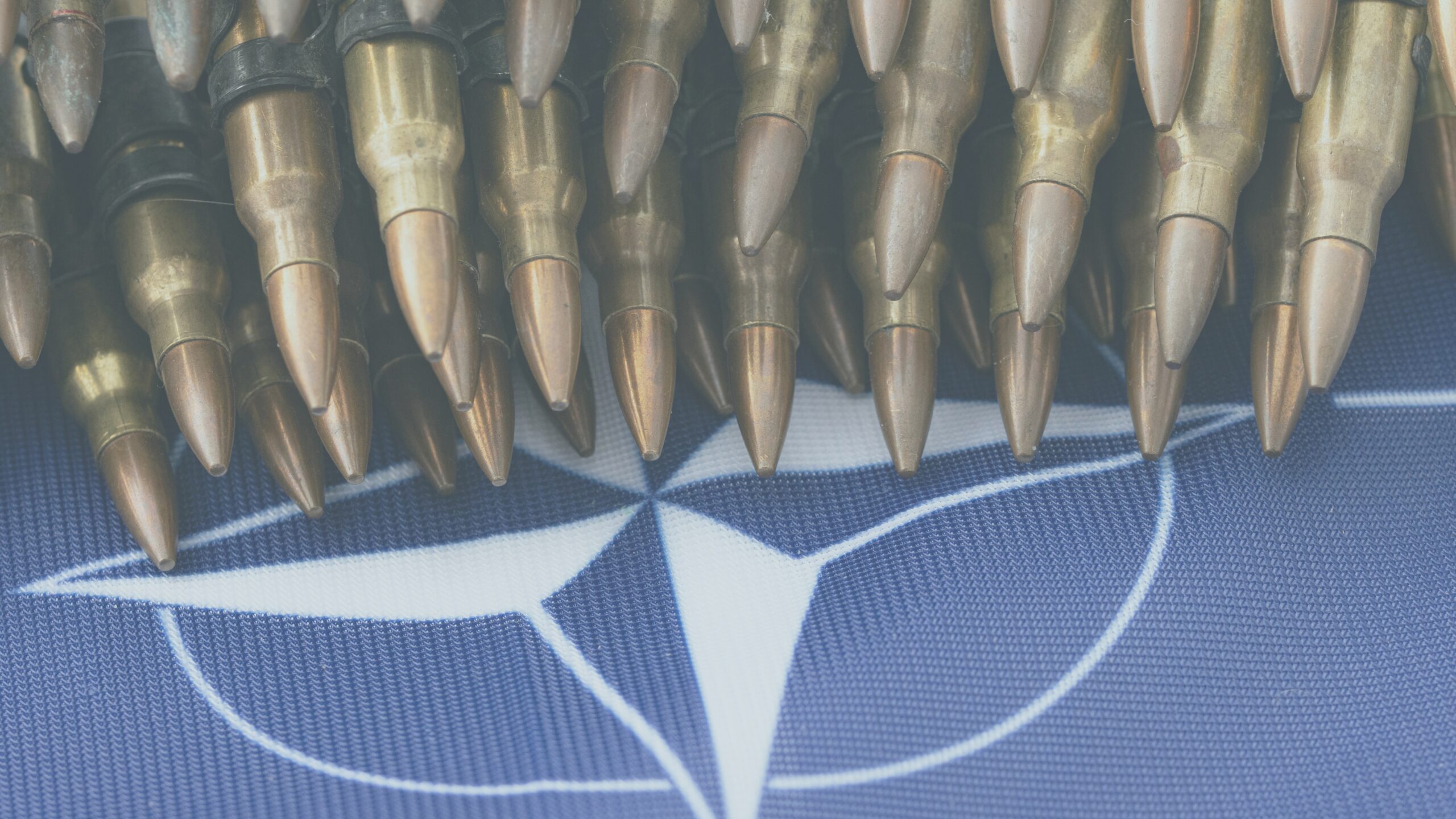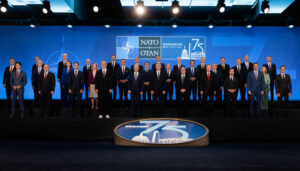NATO’s 2% defence benchmark has been a cornerstone of collective security. However, given the current geopolitical landscape and shifting US priorities, there’s a growing need to reevaluate the criterion. The recent launch of new European defence initiatives further complicates the discussion, prompting a closer examination of the 2% target. As new European defence initiatives emerge, Sierra Tango takes a closer look at the intricacies of this objective.
NATO’S 2% BENCHMARK AND EUROPE’S DEFENCE FUTURE: A NEW ERA OF SECURITY SPENDING?

The 2% Commitment
At NATO’s 2014 Wales Summit, Member States pledged to allocate at least 2% of their GDP to defence spending to enhance collective security and military readiness. A decade later, progress has been made, albeit unevenly. The pressure from the US and the ongoing war in Ukraine have positively impacted European defence spending. According to Intereconomics (2024), 23 out of 32 NATO members met the 2% target in 2024.
Furthermore, in 2024, four European Allies (Poland, Estonia, Latvia and Greece) surpassed the 2% threshold, with over 3% annual defence expenditure, marking a significant improvement. However, nearly one-third of Member States still fall short of the standard, underscoring ongoing challenges such as economic constraints, political reluctance, and varying threat perceptions. In light of these circumstances, current conversations over NATO’s set benchmark suggest that it should be interpreted as a minimum threshold rather than a maximum.
The US Perspective: Shifting Priorities
The United States has long been NATO’s backbone, providing significantly more defence capabilities than other Member States. This has fuelled debates about equitable burden-sharing. President Trump’s criticisms of NATO Allies’ insufficient defence funding have heightened tensions. It has been made clear that these statements have prompted European countries to reconsider their reliance on American military support and proactively increase their own defence spending.
In this context, President Trump has reiterated his intention that European NATO Allies should allocate 5% of their GDP to defence, a substantial increase above current spending levels (Euractiv, 2025). While such a threshold may seem unattainable for many countries, its implementation conveys a clear message: the United States expects greater financial and military commitments from its European partners.
Europe: Between NATO and Strategic Autonomy
In response to evolving challenges, Europe is adopting a dual strategy: aligning with NATO’s defence standards while simultaneously striving for greater strategic autonomy. The European Union has announced an initiative to enhance its security capabilities and deter potential threats by 2030. This decision comes amidst growing concerns over the evolving security dynamics globally.
The European Commission has initiated efforts to streamline defence spending and reduce reliance on foreign partners. This strategic realignment is essential, but it has also faced criticism regarding the limitations of Europe’s defence capabilities in the absence of US assistance. This perspective underscores the urgent need for closer integration and enhanced coordination among EU Member States to establish a robust and unified defence posture capable of addressing contemporary security challenges.

ReArm Europe’: A Turning Point?
On 18 April 20205, the European Commission unveiled the ‘ReArm Europe’ initiative, a comprehensive plan to enhance its defence capabilities and reduce its reliance on external allies. Detailed in the ‘White Paper for European Defence – Readiness 2030,’ the plan aims to allocate almost €800 billion to improve military preparedness, revitalise the European defence industrial sector, and foster innovation. A key component of this strategy is the establishment of a ‘Single Market for Defence,’ which seeks to connect defence markets across EU member states and Ukraine.
The initiative also proposes a €150 billion loan scheme to finance defence procurement across EU Member States. This “Buy European” approach aims to strengthen internal defence industries while maintaining strategic partnerships with select external partners.
Despite the strategic purpose behind the initiative, financial and political obstacles persist. As noted by The Economic Times (2025), concerns have been raised about the exclusion of crucial allies from procurement processes, arguing that this could disrupt existing integrated defence value chains and diminish collaborative defence efforts.
As the EU grapples with these intricate dynamics, the success of the ‘ReArm Europe’ initiative hinges on striking a balance between the imperative for self-reliance and the practicalities of existing defence collaborations. The coming months will be pivotal in determining whether European leaders can reconcile these challenges and devise a cohesive strategy to achieve the objectives outlined in the ‘Readiness 2030’ framework.
Beyond 2%: A New Defence Spending Target for NATO?
As security threats evolve and discussions continue, there is a growing recognition that the 2% target might no longer be sufficient. NATO Secretary General Mark Rutte has advocated for defence spending to surpass 3% of GDP to address emerging security challenges (Politico, 2025). This proposal reflects a broader shift in strategic thinking, emphasising the need for sustained investment in both traditional and non-traditional security domains.
Influenced by Trump’s demands for increased defence spending and mounting concerns about Russia’s military capabilities and activities, NATO Allies are likely to set a new objective for defence expenditure during a meeting in The Hague in June of this year. This upcoming decision could be a pivotal moment for the Alliance, potentially prompting European members to further enhance their military commitments and bolster NATO’s collective deterrent posture.
The Road Ahead
The ongoing debate on defence spending highlights the urgent need for NATO Members to reevaluate their commitments. While the 2% benchmark remains a crucial indicator, the growing emphasis on higher spending and initiatives such as the Commission’s ‘Readiness2030’ plan indicated a shift towards a more robust and self-sufficient European defence posture, both within Europe and within NATO. To ensure that these initiatives complement each other rather than duplicate one another, effective coordination between European NATO Allies and EU efforts will be paramount in strengthening collective security in an increasingly uncertain global environment.